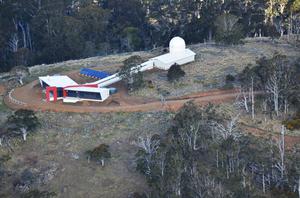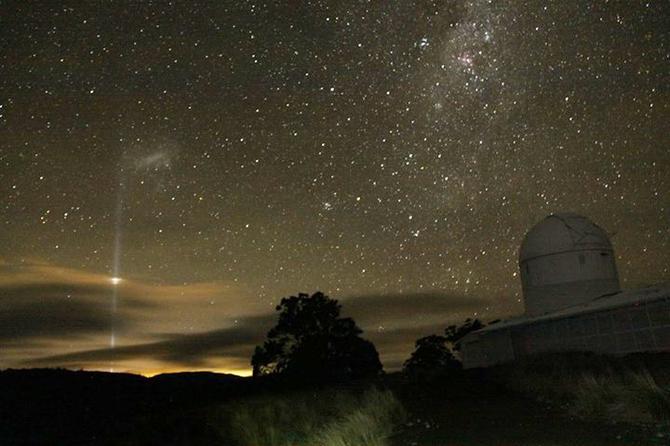Nine and a half years ago the New Horizons spacecraft left Earth heading towards the last unexplored major body in our solar system, the dwarf planet Pluto.
On 14 July 2015, New Horizons conducted a flyby of the planet, collecting incredible amounts of data that will take 16 months to return to Earth. The first data alone has totally changed what we previously believed about the remote planet.
What will we learn from Pluto?
Pluto
is named after the Roman god of the underworld
New Horizons has captivated the imaginations of people around the world. The images being beamed back to Earth from the dwarf planet at the outer reaches of our solar system have us enthralled. While we’re anxiously awaiting news of the next data returned. What do we hope to find? Why is Pluto so fascinating? What is next on the great quest of space exploration?
Scientists at the University of Tasmania are studying their own newly gathered data on Pluto, data that is unique.
Pluto is not like other planets in the solar system. It has a very unusual orbit. Instead of orbiting at a nearly constant distance from the Sun, Pluto’s orbit is egg shaped and tilted. The elliptical orbit takes the dwarf planet nearer the sun than Neptune for part of the 248 years of its orbit and further away for the rest. This means that its temperature would be changing radically, with extreme seasonal variations. The tilt away from the rest of the Solar System suggests that Pluto may have formed quite differently than the more well-known, larger planets.
The greatest questions of astrophysics
Dr Andrew Cole, an Astrophysicist and Senior Lecturer at the University of Tasmania, studies the evolution of the Universe from the Big Bang to today. He uses the world’s largest ground-based and space telescopes to capture information that will help us answer the greatest questions of all – how did we get here and what is the future of our Universe?
Each bit of data we collect adds to our understanding. We can’t replicate the time scales or energies of space in a lab, so we have to collect data from space itself. But every time a probe goes past a planet or an asteroid or a comet and collects data, it raises more questions than it answers. There is never a time when we can imagine knowing everything that we need to know.
Dr Cole has been working with an international team of approximately two-dozen astronomers from France, Brazil, and the United States, to collect data on Pluto using Tasmania’s Greenhill Observatory.
Pluto recently passed in front of a background star. By analysing the distortion of the light of the background star we can answer questions about Pluto’s atmosphere.
Because the alignment between Pluto and the background star had to be extremely precise, it could only be seen from a narrow strip on the Earth’s surface, which included Tasmania and the South Island of New Zealand.

The Greenhill Observatory houses a 1.27m optical telescope
“Our results were critical,” said Dr Cole, “and we have a unique perspective in this experiment. We had multiple requests for the type of data we would collect. We promised to use our telescope for one experiment with a visible light filter and then another consortium asked to use an infrared camera.”
We didn’t have the capability to do both at the same time, but being physicists, loving problem solving, we thought... we could do that if we built a mirror that splits the light and sends the infrared one way and the visible light the other. And it worked.
“As far as I know we’re the only place that recorded this event both in the optical/visible light and in the infrared. So if the sky is blue on Pluto we’ll be able to tell, just by comparing the images together.”
A new picture of Pluto
The University of Tasmania researchers and their collaborators are still analysing the data to work out what it tells us, but Dr Cole says it’s clear that Pluto has a more active atmosphere than scientists might have guessed.
Because of the extreme variation in temperatures on Pluto, its possible that there is weather happening.
247.94 years
on Earth pass in the time it takes Pluto to orbit the Sun once.
“One prediction is that maybe the atmosphere freezes out, that it all turns into methane snow and condenses forming snow caps at the poles, like dry ice. At other times it will become a gas and be part of the atmosphere.”
“If the atmosphere is condensing out is it forming clouds? Is the atmosphere clear or hazy? By making very careful measurements, we can start to answer these questions,” said Dr Cole.
It's not the first time that Tasmanian researchers have played a role in important discoveries regarding Pluto. In fact, Tasmania’s telescope was used in a similar experiment in the mid 80s to confirm the original discovery of Pluto’s atmosphere.
“A NASA mission that involved flying a telescope very high in the atmosphere on a specially modified aircraft, obtained evidence that maybe Pluto had an atmosphere. The scientific community was sceptical. Using the same trick of waiting until Pluto passes in front of a background star, Tasmanian researchers were able to confirm NASA’s discovery.”
What can we learn from New Horizons?
Sunlight
on Pluto has the same intensity as moonlight on Earth.
Dr Cole is also looking forward to getting his hands on the data from New Horizons.
“I’m most excited about what the results will tell us about the big picture. There are a lot of things that we don’t understand about how planetary systems form. Anything that we can add to the picture helps,” he said.
For example, how do icy small objects very far from stars actually come together, how do they form and last for 4.5 billion years?
“I’m most interested in the interior composition of Pluto, how old its surface might be, and whether internal processes or impacts during the history of the solar system have been the most important factors in shaping it.”

View from the Greenhill Observatory back towards Hobart and Dark Mofo's 'Pulse Column' light, June 2015 Image: Dr. Andrew Cole
Deepening our understanding of the universe.
Learning how planets form, whether they are common or rare, can help to inform our understanding of the evolution of the Universe.
“What were the odds that the Earth formed around the Sun? Are there planets like Earth all over the place or is it extremely unusual?”
The first data from New Horizons has already thrown what we thought we understood about Pluto into question.
Pluto is a dwarf planet - like a moon with no parent planet - so it was expected to be geologically dead. Images from New Horizons show evidence of processes that have formed mountains. This tells us that there is a little bit of extra energy in the system that nobody has thought of.
In 2006
Pluto was reclassified from a planet to a dwarf planet.
“There is still a piece of the puzzle missing. We don’t know if those mountains are relatively recent, if they are left over from the formation of Pluto or if there was some heating event that happened at some point, like from a massive collision with another object. It’s just a mystery at this point.”
After Pluto, what’s next?
Dr Cole says there are thousands of other similar sized objects, dwarf planets and the like, yet to be explored in our solar system.
“Pluto is just the tip of the iceberg,” he said. NASA plans to send the New Horizons spacecraft past one of the Solar System’s smaller icy dwarf planets on its way out of the Solar System, but the exact path has not yet been finalised.
“As for promising targets for future missions? The most common planets to find in the universe are similar to Neptune, maybe 15-20 times the size of the earth and probably a bit icy. So exploring these ice giant planets has become a pretty big priority for scientists right now.”
Banner images: NASA
Interested in conducting your own research? Apply now to become a research student.

